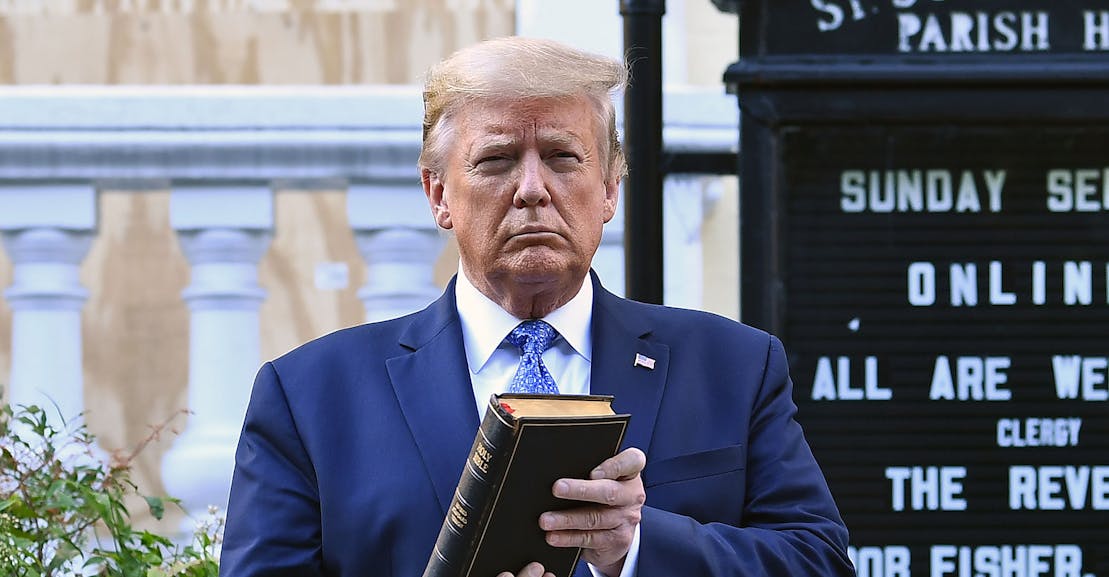Five years ago this week, Donald Trump’s presidential campaign hit a snag. The second Republican primary debate had not gone well, and he was taking so much flak for failing to correct an Islamophobic supporter at a rally in New Hampshire that he canceled an event in South Carolina scheduled for the next day. In just 72 hours, he seemed to go from dominant front-runner to an amateur making rookie mistakes. Heading to Iowa on September 19 for a meeting of the Faith and Freedom Coalition, where every major Republican candidate was making an appearance, he apparently decided to try something new.
“I brought my Bible,” he said to the audience of conservative Christians, waving a faded blue hardcover embossed with the words Donald Trump as he took the podium. “See? I’m better than you thought.” In case his intended message was too subtle, he made it plain a few minutes later. “I’m a Christian,” he said. “Do you believe me?”
Such an obvious ploy seemed unlikely to work. He grinned as he lifted his Bible overhead, looking uncharacteristically sheepish, almost acknowledging the absurdity of it—“the religious equivalent,” CNN commentator Errol Louis noted at the time, “of going to an Iowa farmer in some overalls and some brand new boots.” Taking the stage after Trump, Louisiana Governor Bobby Jindal tore into his GOP primary rival’s attempt to use holy writ as a shibboleth. “The reality of Donald Trump is that he’s a narcissist. He believes in nothing but himself,” Jindal said. “Folks, he hasn’t read the Bible, you know he hasn’t read the Bible. He only reads books he’s in.”
That both Jindal and Trump received hearty applause suggested a rift in the room that would not soon heal. And yet, somehow it did—thanks perhaps to these remarkable moments when Trump, with a wink, played the part of a man of God, and conservative Christians decided to play along.
Since that day in 2015—which seems to have been Trump’s first public use of the Bible—his relationship to the potent, contentious religious symbol has evolved from smirking, half-hearted displays of feigned piety to grave rituals designed to feed the devotion of his base. As he has repeated the scripture-waving act—a week later at the Values Voters Summit, then in a video thanking evangelicals for their support in January 2016, and most recently in June, when police teargassed protesters outside the White House so he could pose in front of a nearby church—it has grown darker, while its broader significance has become more clear.
